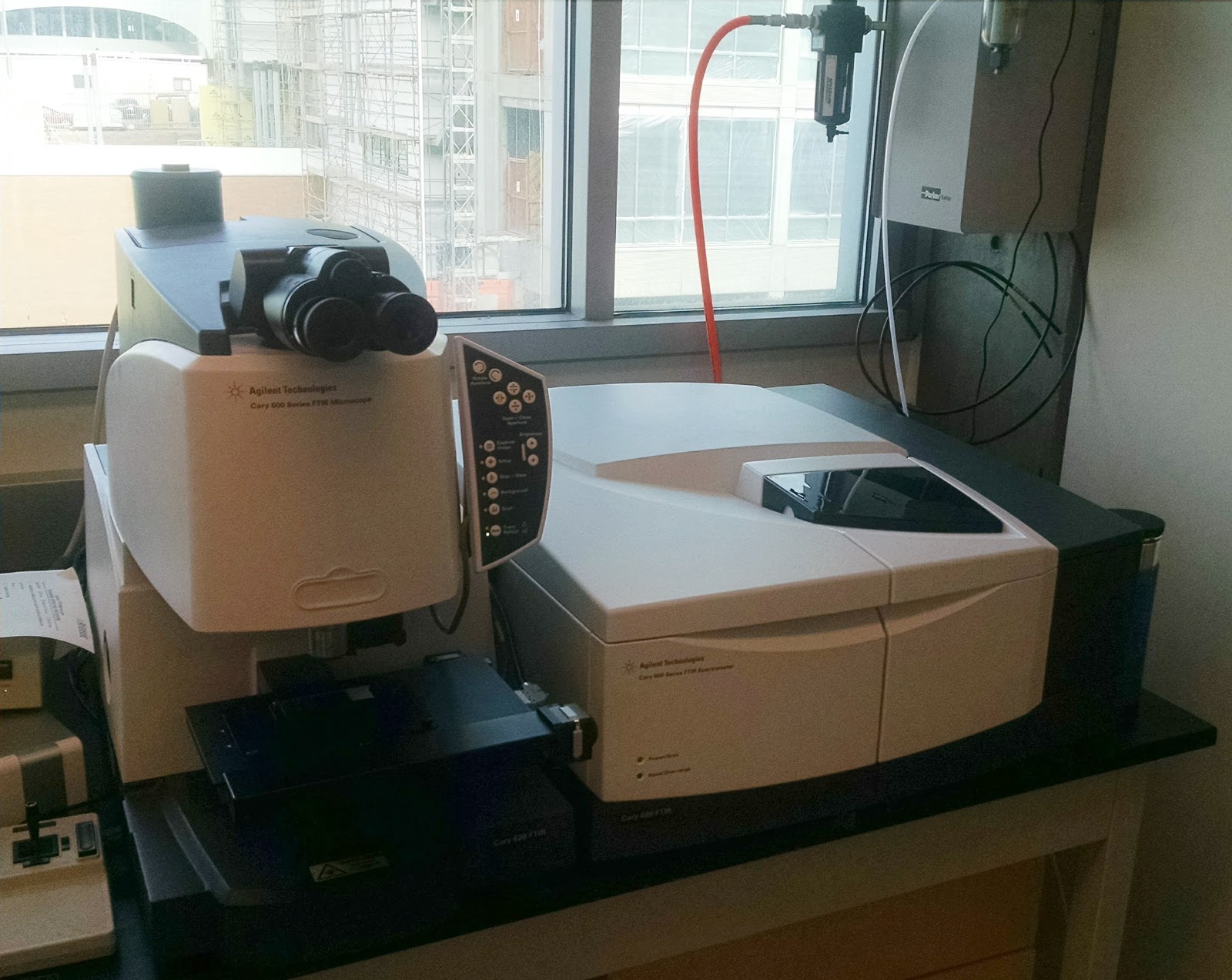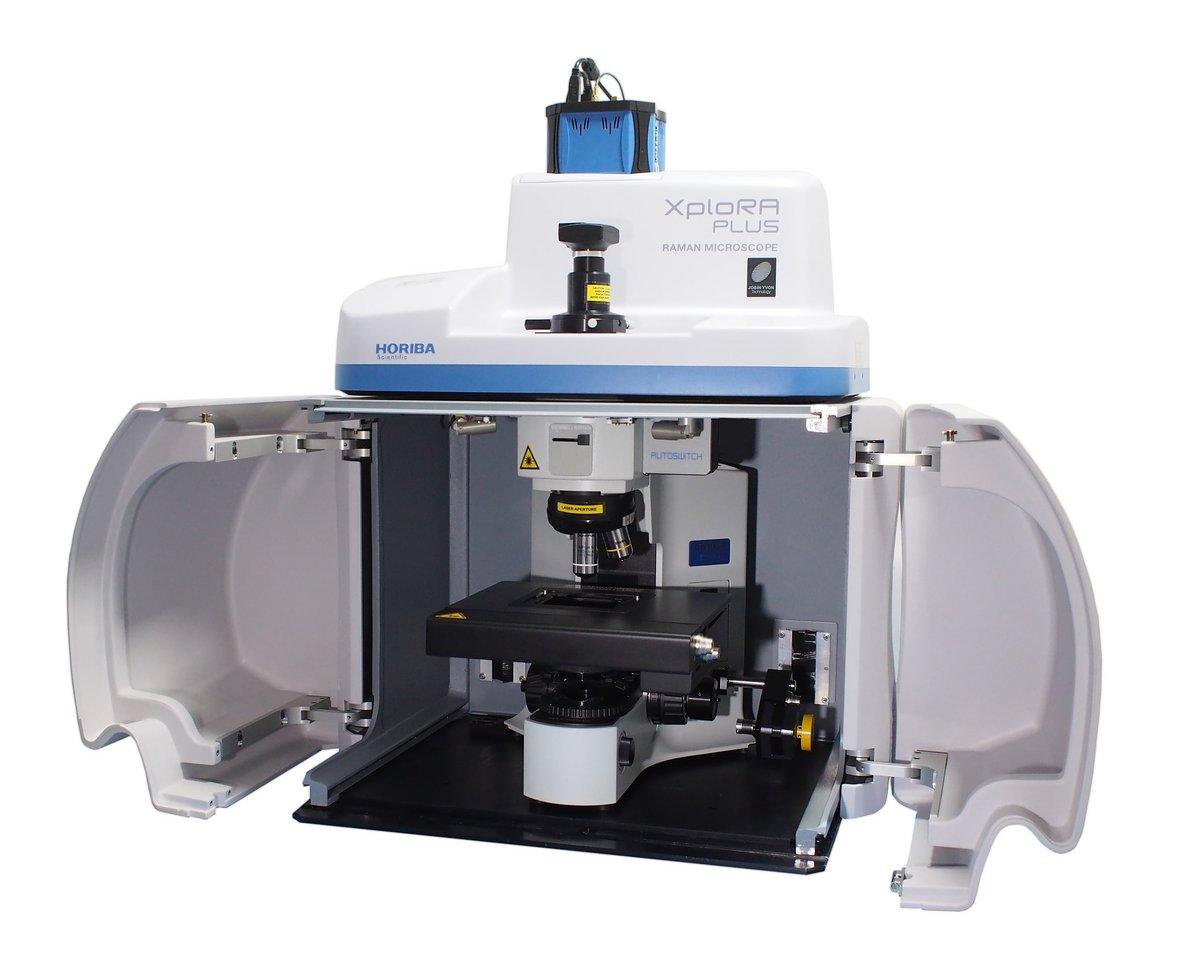NanoNC Composite Electro Spinner(Model #ESR200PR3D)
The NanoNC Composite Electrospinner features a unique dual‐head nozzle system with multi‐axis robots enabling 2‐solution coaxial electrospinning of synthetic nanofibers. A variety of materials can be spun, producing both homogeneous nanofibers and core‐shell composite fibers, through the use of two collectors, the flat plate and the rotating drum. The NanoNC Electrospinner provides full control of various operating parameters including drum rotating speed, working distance and angle, precursor feeding rate, and voltage fields. Currently, this equipment is used to spin highly oriented nanofibers with controlled dimensions, porosities, and surface morphologies. |
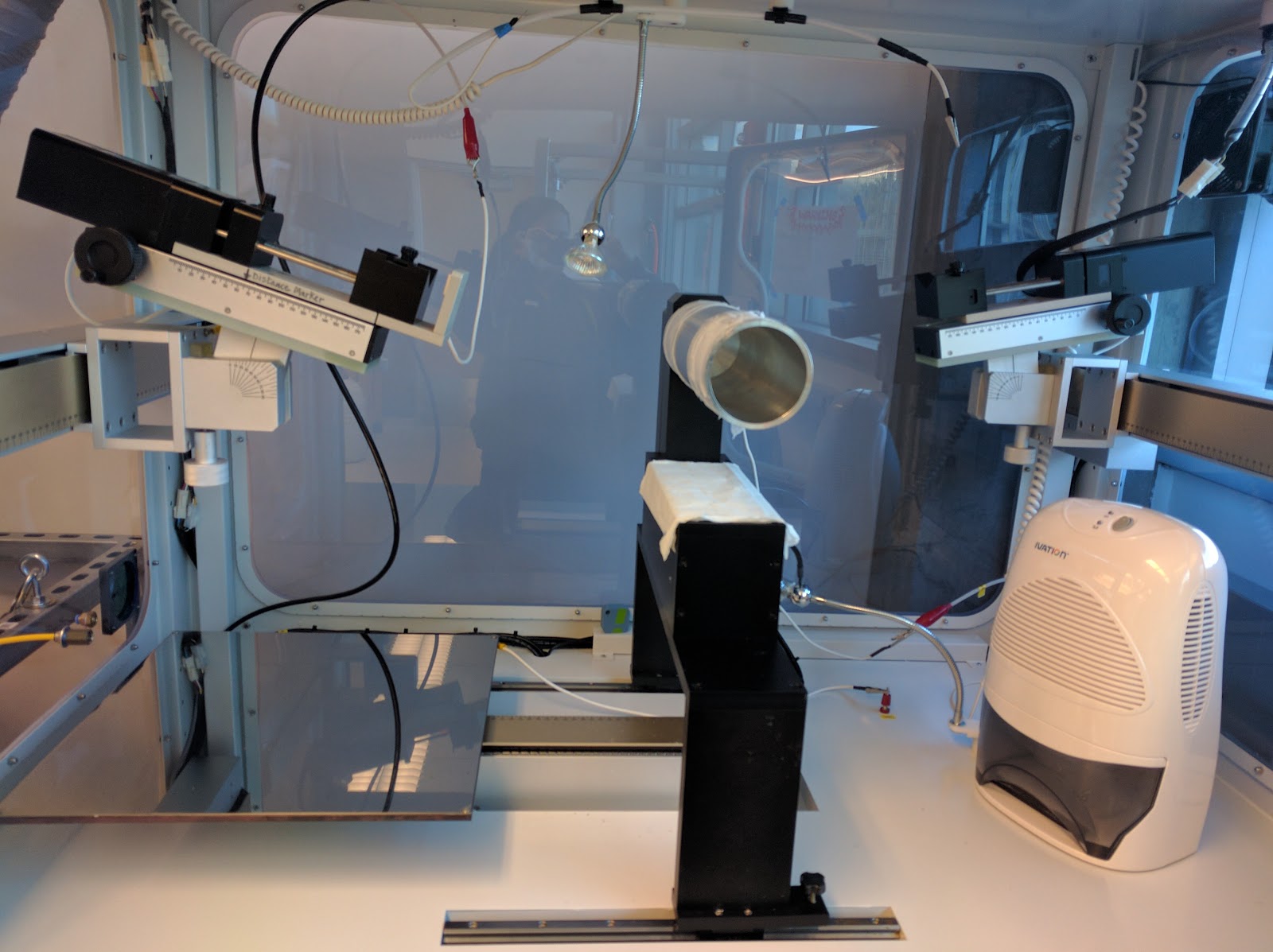 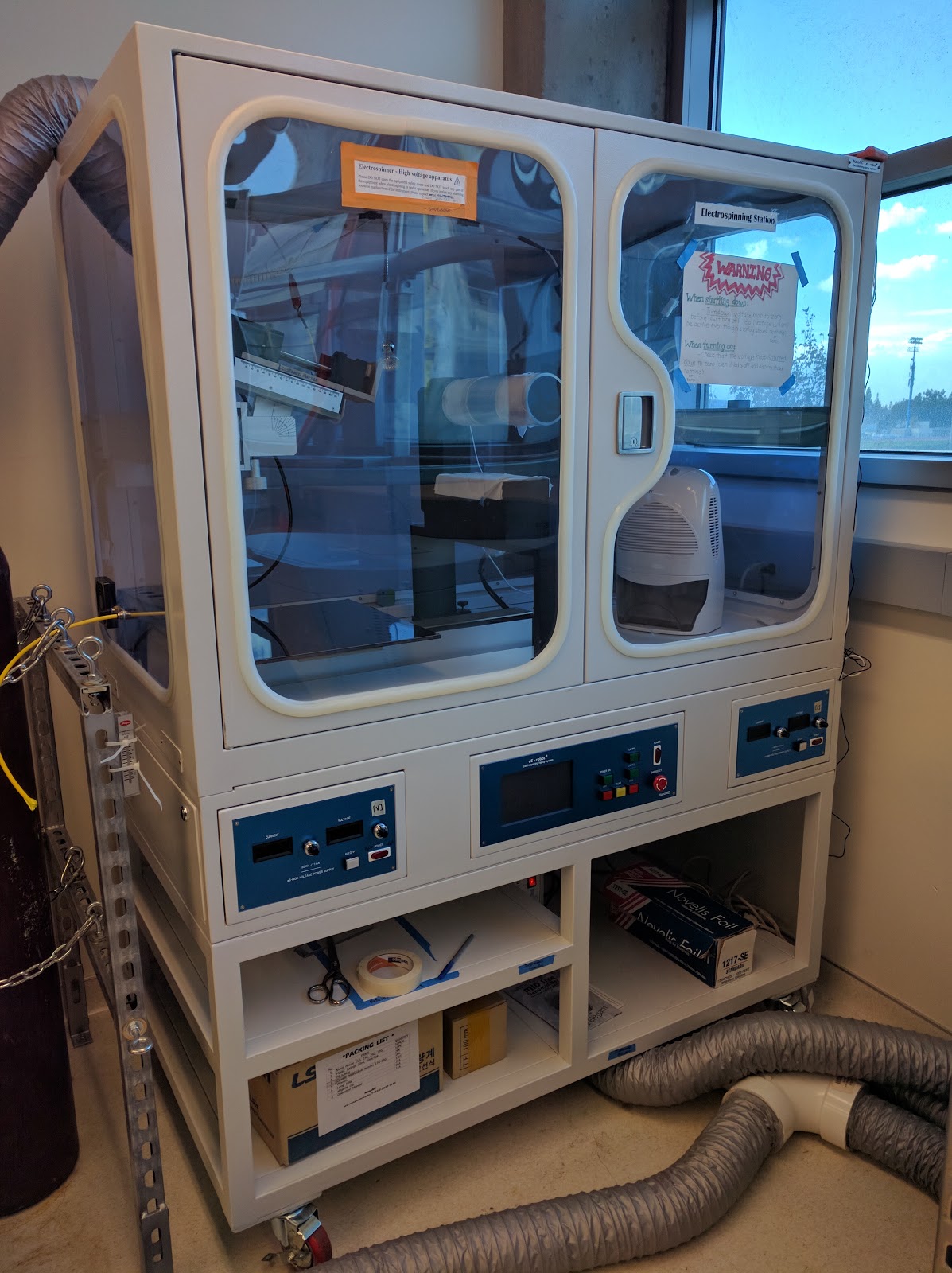 |
Composites Prototyping
Our composites lab includes fiber cutting station and composites fabrication bench equipped with materials for wet layup, vacuum assisted infusions and prepreg composite production. We have the capabilities of producing a variety of curved structures and flat panels 1 meter 1 meter. |
 |
FormLabs Form2 3D Printer
The Form2 provides industrial quality 3D printing in a small form factor. At the heart of the machine is a powerful optical engine guided by custom-built galvanometers that work in tandem with high precision 250mW laser to draw parts at 25-100 micron resolution. Allowing for relatively large prints, the maximum build volume is 145 x 145 x 175 mm. This machine is also equipped with a variety of Engineering Resins are formulated to withstand extensive testing and perform under stress. |
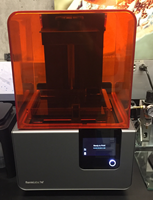 |
Ultimater S5 3D PrinterThe Ultimaker S5 has a very broad appeal for any commercial 3D printing need. Engineers will enjoy its flexibility to accurately produce complex models nearly flawlessly, and those who need prints with dual filaments or challenging materials can also reap the benefits of this machine. The Ultimaker S5 means business, and there’s no denying that future firmware tweaks will continue to improve this already impressive machine. |
 |
Convection Ovens
Our convection ovens are able to reach temperatures of up to 250°C. |
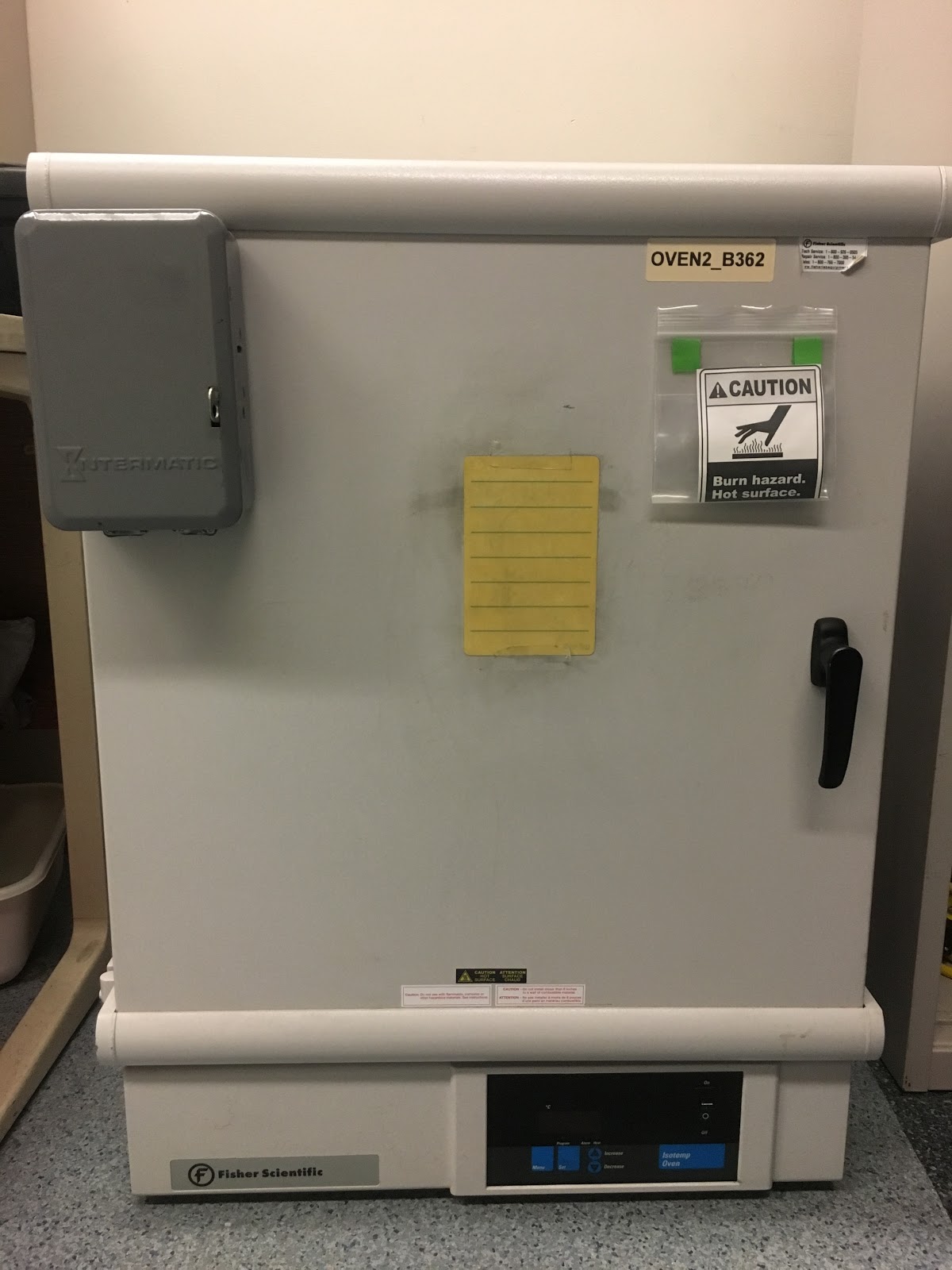 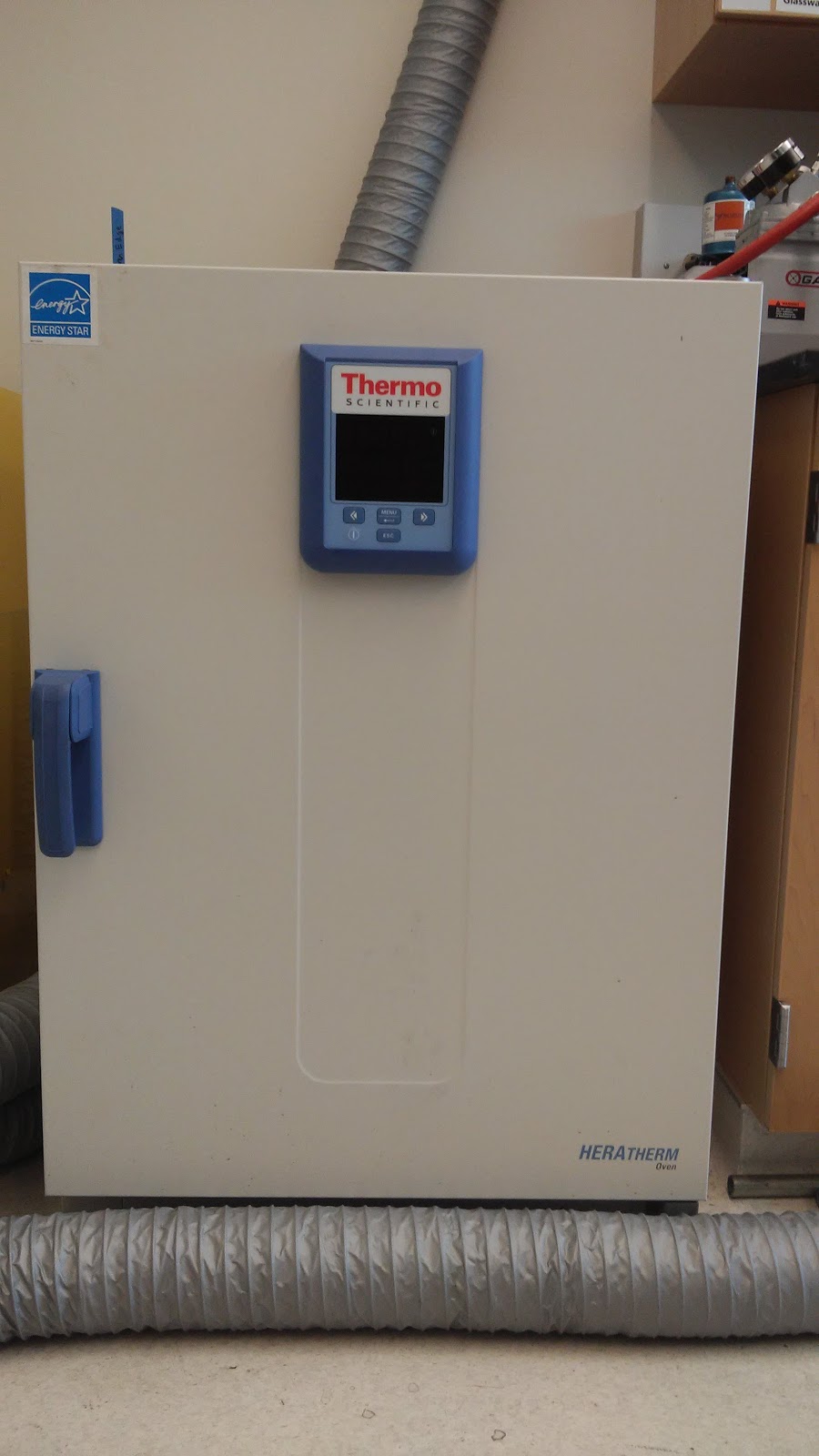 |
Tube Furnaces |
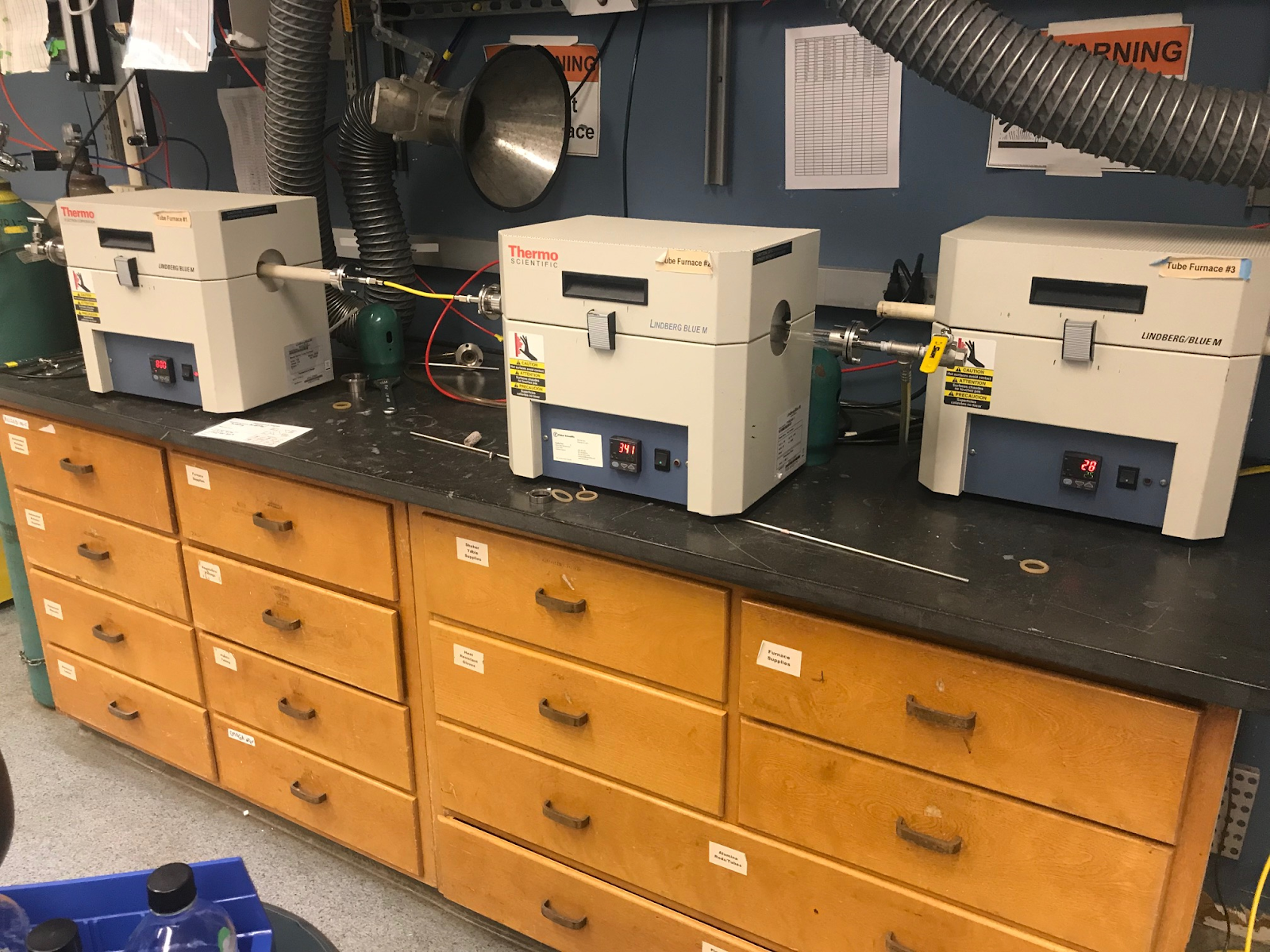 |
Thinky® Planetary Centrifugal Mixer
The planetary centrifugal mixer rapidly disperses materials uniformly and deaerates simultaneously. Revolution causes powerful acceleration that promotes deaeration, and, at the same time, rotation generates convection of materials in the container, achieving quick dispersion and deaeration. The mixer is optimal for rapid mixing and deaeration of polymer mixtures, like epoxy resin, and colloidal suspensions. |
 |
|
Muffle Furance
(Thermo-Fisher Lindberg Blue model) 1,700C maximum temperature, 95 minutes to ramp up to this temperature from ambient conditions. Programmable, up to 99 steps. Interior dimensions 11 x 9 x 10.5 inches. It has a gas flow port (Argon, Nitrogen, etc…) but does not have an atmospheric seal, so there will always be some air that gets into the chamber. |
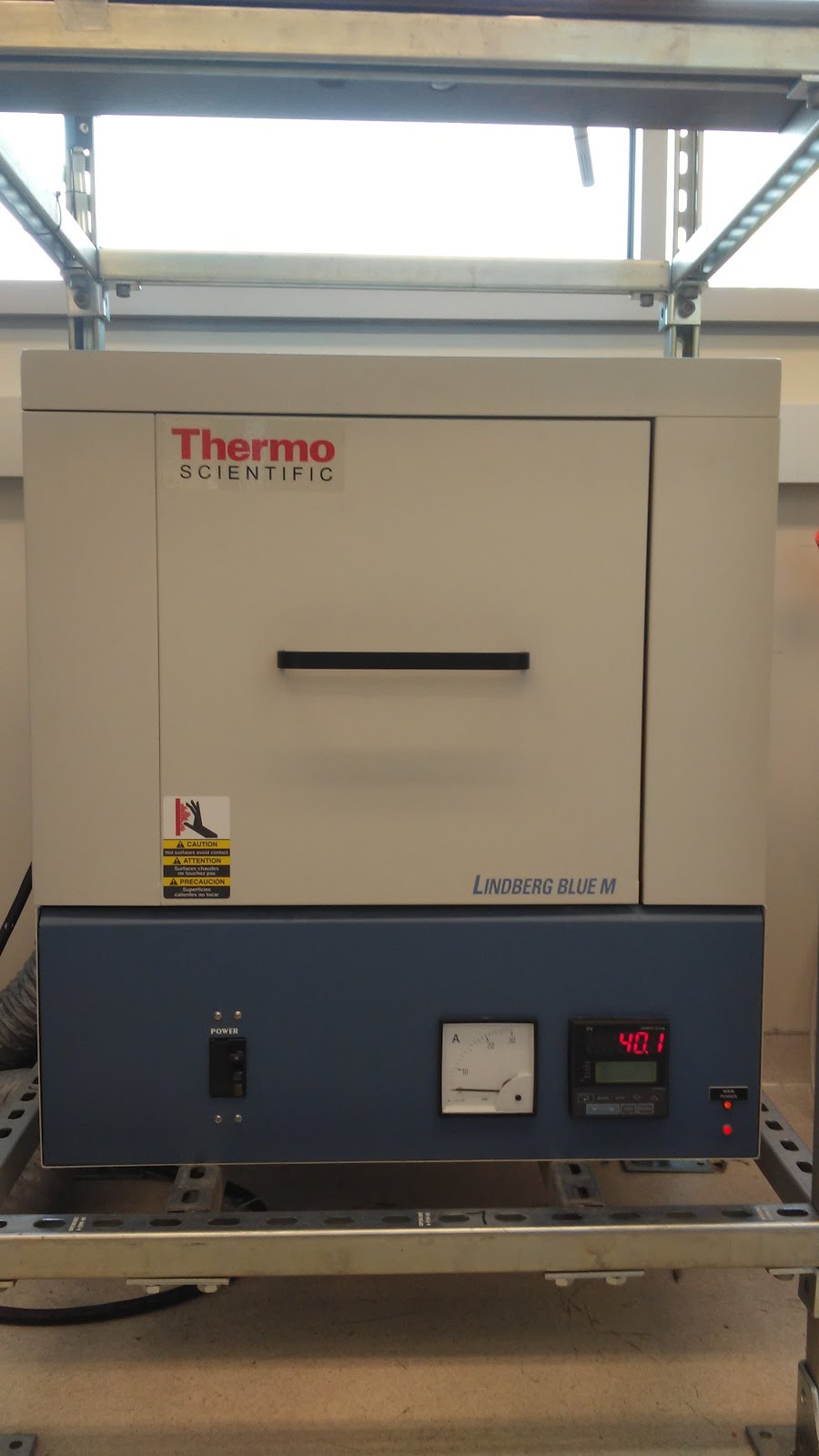 |
|
Centrifuges
Our centrifuges are capable of a maximum of 13,000 rpm. |
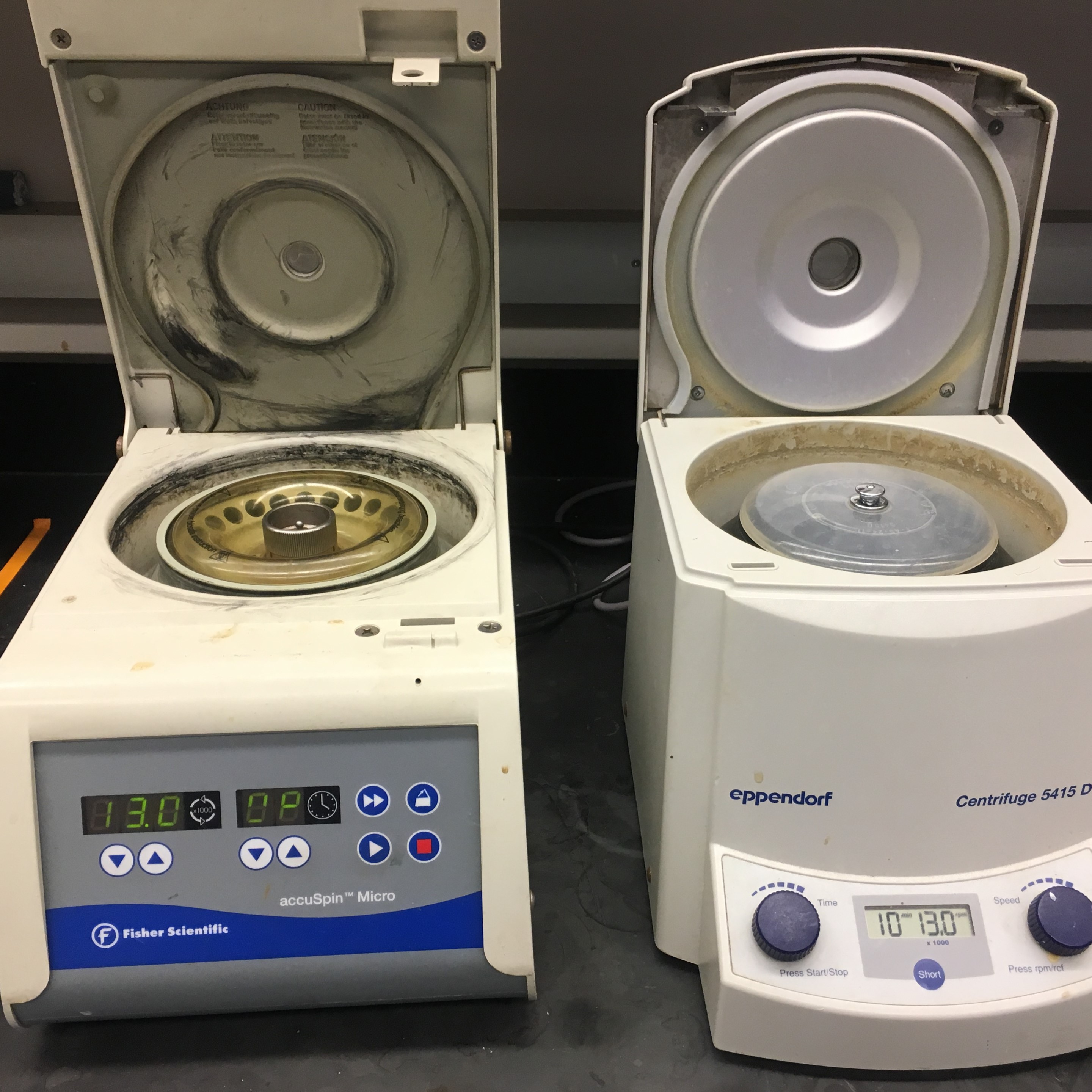 |
Chemat Spin Coaster
Stage 1 speeds 500-1,500 rpm for 2-18 seconds; stage 2 speeds 1,000-8,000 rpm for 3-60 seconds. |
 |
|
Brookfield Digital Rheometer
The Brookfield DV-III programmable rheometer measures fluid parameters of shear stress and viscosity at given shear rates. Cone-plate and T-bar spindle attachments allow for the measurement of fluids with viscosity ranging from 0.15 cP to 9,000,000 cP. Measurements can be made with as little as 0.5 mL of solution. A water bath also provides continuous flow of water to a jacket surrounding the cup, allowing for precise control of the temperature of your solution during measurement. |
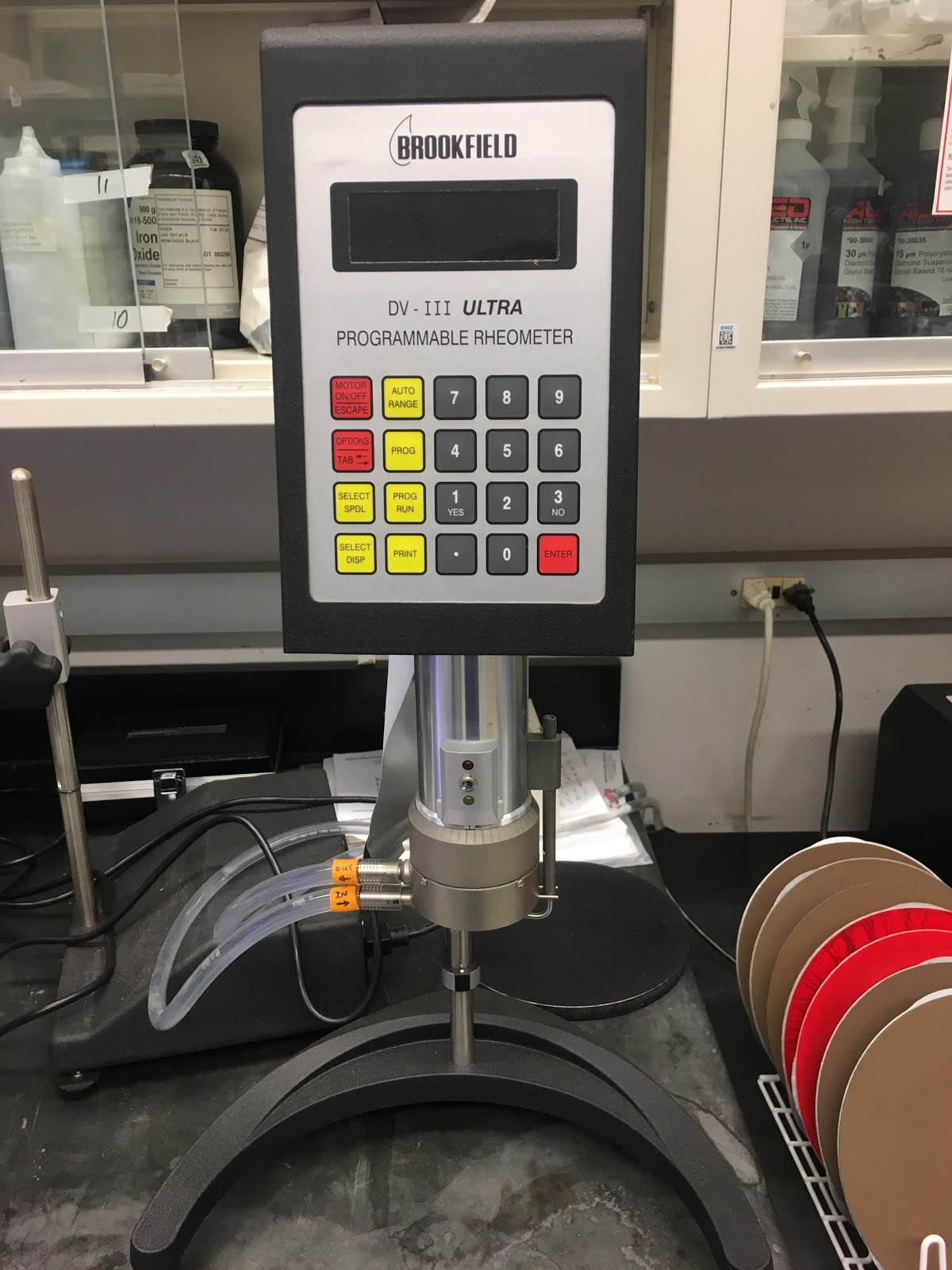 |
|
Hydrothermal Reactor
Our hydrothermal reactors and Teflon liners in different sizes. |
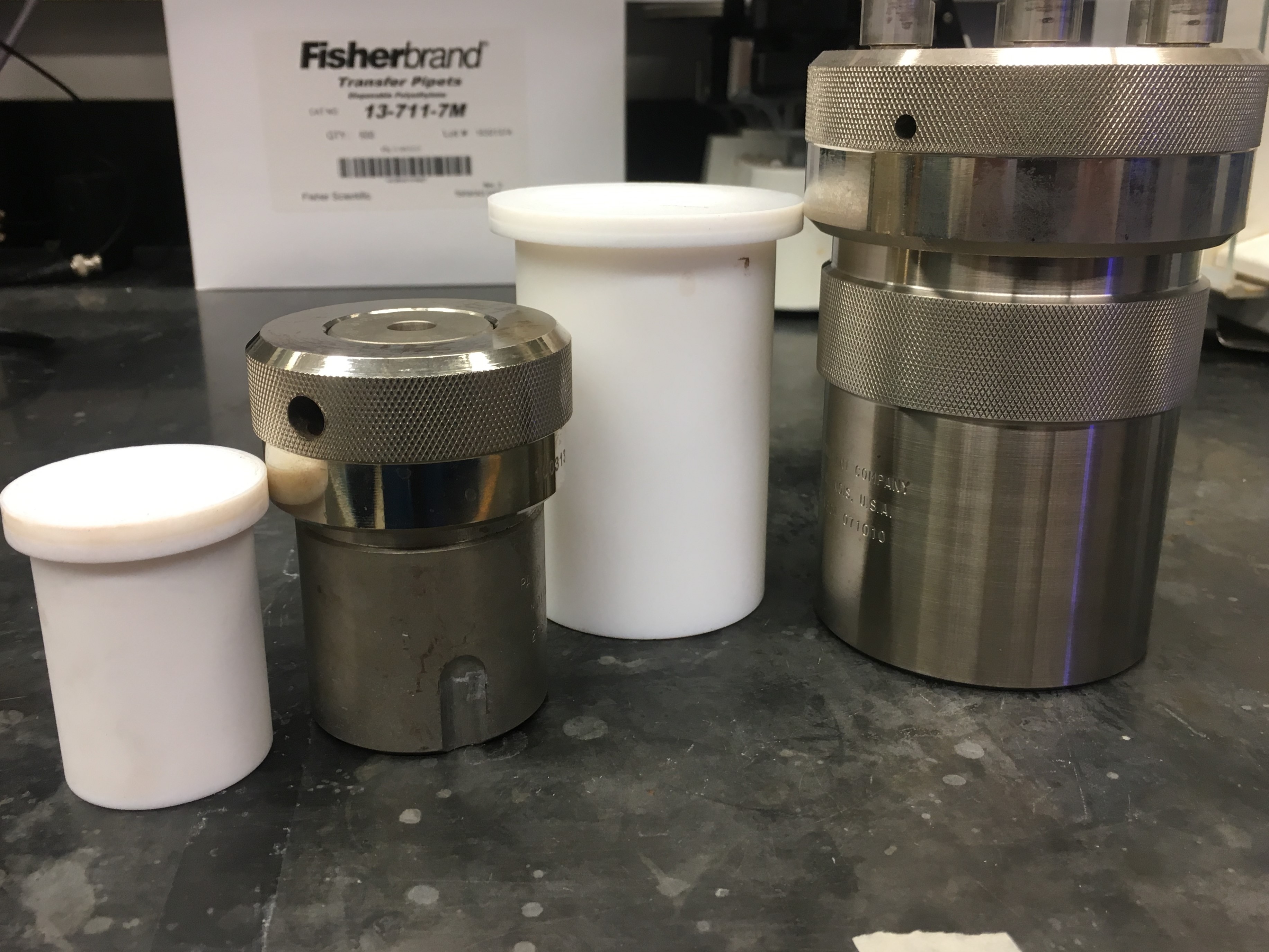 |
Agilent Cary 620 FTIR Microscope
This FTIR Microscope with a motorized stage has two high‐sensitivity detectors capable of transmittance, reflectance, and ATR measurements from 850‐4000 cm‐1. The FPA detector is capable of mapping a 64×64 or 128×128 grid with a spatial resolution of 5.5 microns in one scan, with the ability to tile multiple scans. Using a Germanium ATR crystal with the FPA detector increases the resolution to 1.1 micrometers, although it sacrifices the tiling capabilities. The MCT detector can image a 40 to 100 micron square area with higher sensitivity and quicker scans. It also has 5x and 15x objectives and a built in camera for locating regions of interest. |
|
Horiba Xplora Plus Raman Microscope
Incorporating unique and powerful functions in a reliable, high performance system, ideally suited to the research and analytical lab, the XploRA PLUS is our best multi-sample, multi-user Raman microscope ever. It is fully confocal, not compromising image quality, spatial or depth resolution. The SWIFT Fast Raman images are the fastest fully confocal Raman images available, typically 10x faster than conventional Raman imaging. The simplicity and power of the XploRA PLUS is unmatched with an enhanced range of options such as multiple laser wavelengths, EMCCD detection, Raman polarisation and even Raman-AFM combination. |
|
Mettler Toledo TGA/DSC 3+
Features and benefits of the METTLER TOLEDO TGA/DSC 3+: METTLER TOLEDO ultra-micro balance – rely on the leader in balance technology |
|
Hysitron TI‐950 TriboIndenter Nanoindenter
The Hysitron TI‐950 TriboIndenter nanoindenter has been developed as an automated, high throughput instrument to support the numerous nanomechanical and nanotribological characterization techniques. Proprietary capacitive transducer technology provides unprecedented measurement sensitivity (<30 nN, >0.2 nm), accuracy, and reliability during the nanoindentation process. Electrostatic actuation uses little current, enabling superior drift characteristics that result in faster data acquisition, higher accuracy, and better repeatability.
|
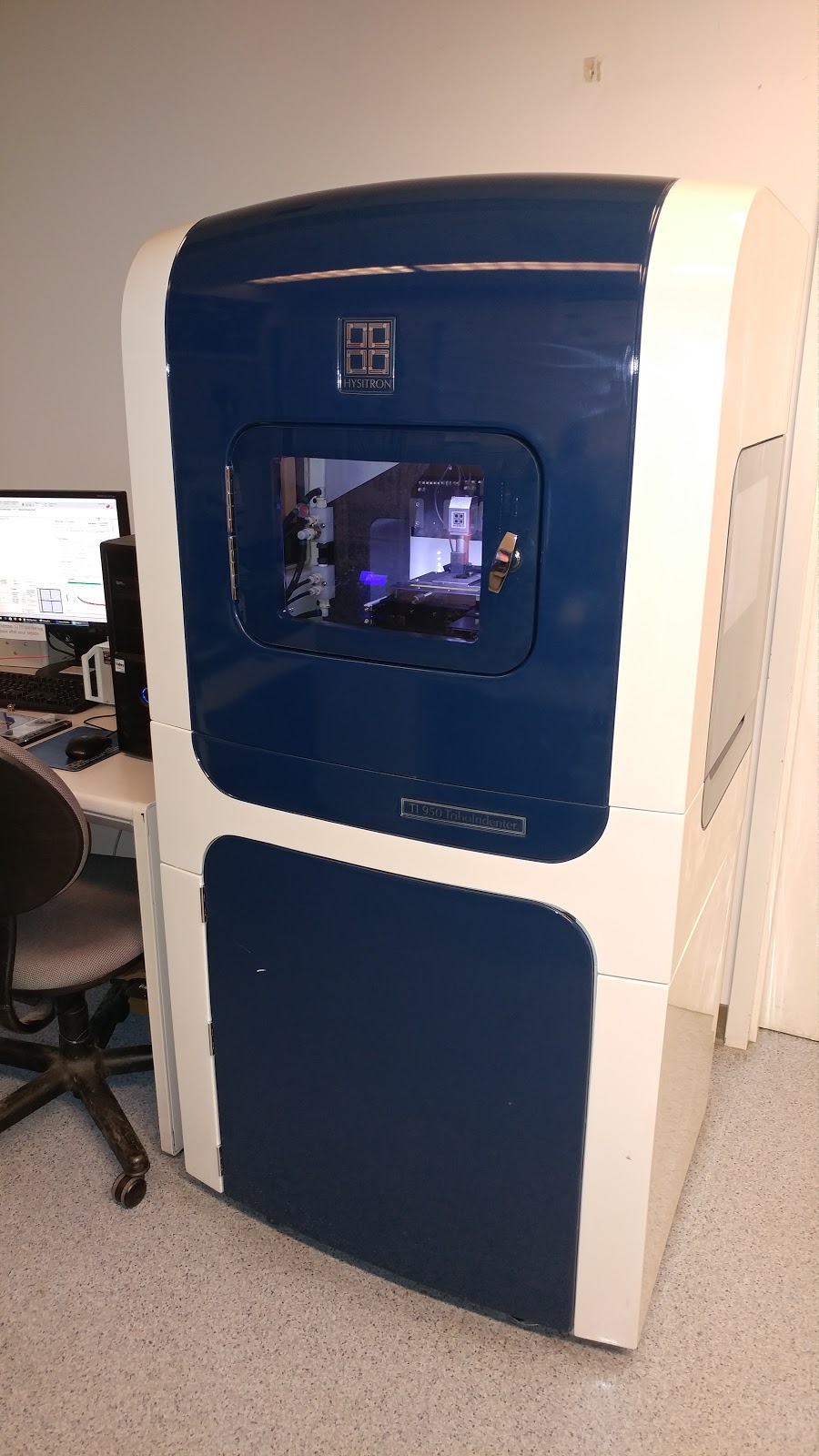 |
Bose Electroforce Dynamic Mechanical Tester
The ElectroForce 3200 test instrumets uses acoustic motors to perform experiments using a 0.5 N or 450 N maximum force load cell. With the versatility of static to 300 Hz frequency response, the table‐top configuration is adaptable to a variety of biomedical research and engineered materials test applications, including torsion testing, creep under dynamic loading and special environments. This load frame is capable of 3‐point bend, 4‐point bend, compression, and tensile testing. |
 |
Micro Materials NanoTest Vantage
Nanoimpact and fatigueNano‐impact testing is particularly suitable for high strain rate contact testing. The strain rates of nano‐impact testing are typically 100‐1000 s‐1, much greater than the nano‐indentation strain rates of 0.0001 ‐ 0.01 s‐1
Nano‐scratch and wearResearchers interested in producing thin films and coatings (from a few nm to about 1 μm thick) for improved wear resistance in thin film applications need to optimize both the mechanical properties and tribological performance.
Humidity CellA full range of humidity from 10% to 90% is therefore possible, irrespective of ambient room conditions. Compatible with all impact, fatigue, and scratch testing. |
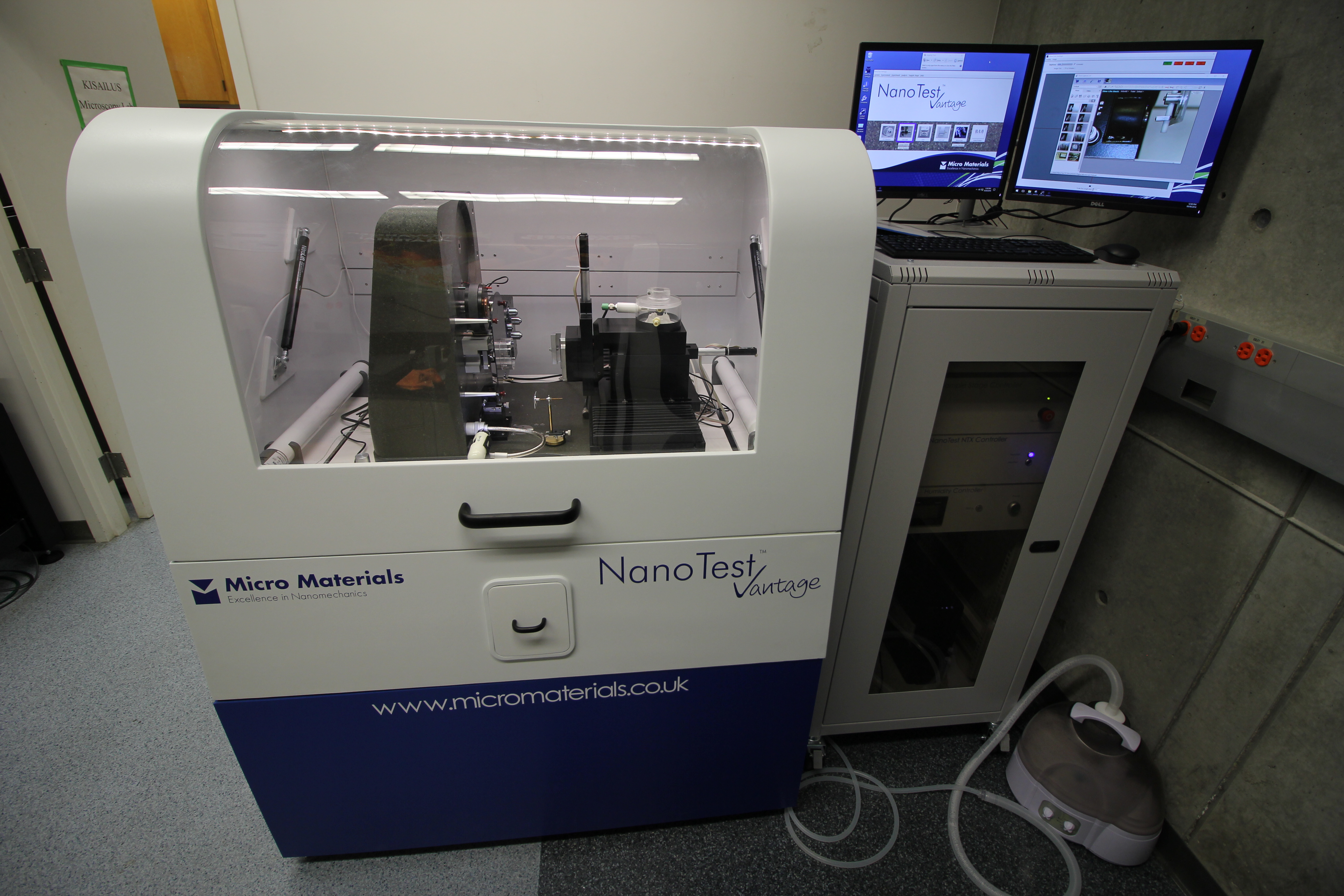 |
Allied MultiPrep Automated Polisher |
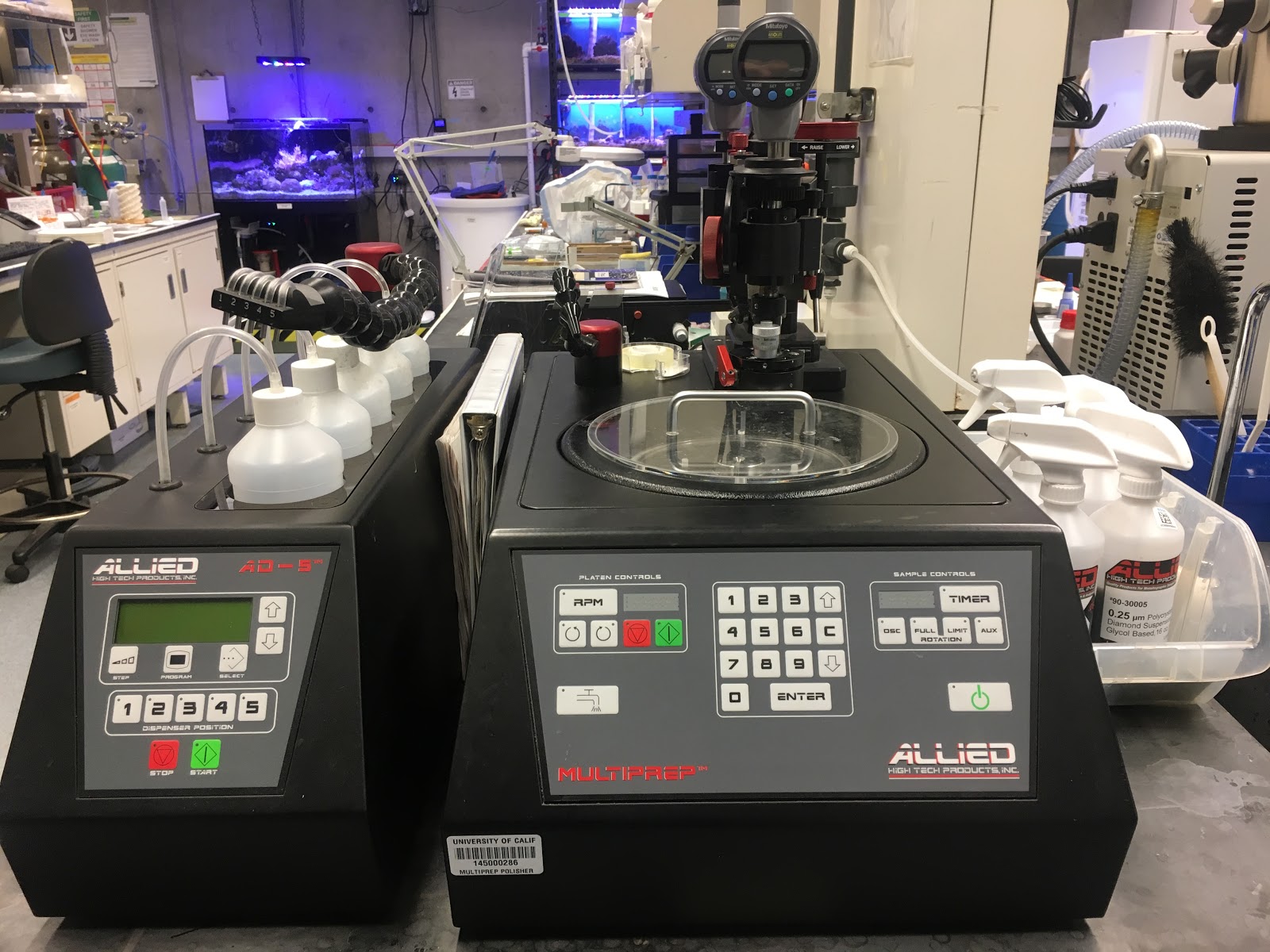 |
Allied TechCut4 Precision Low Speed Saw
The low speed diamond saw allows for cutting and sectioning of biological and biomimetic composite materials. Precise serial sectioning can be achieved using a micrometer attached to the positioning arm. Saw speed can be varied from 10 to 500 RPM. |
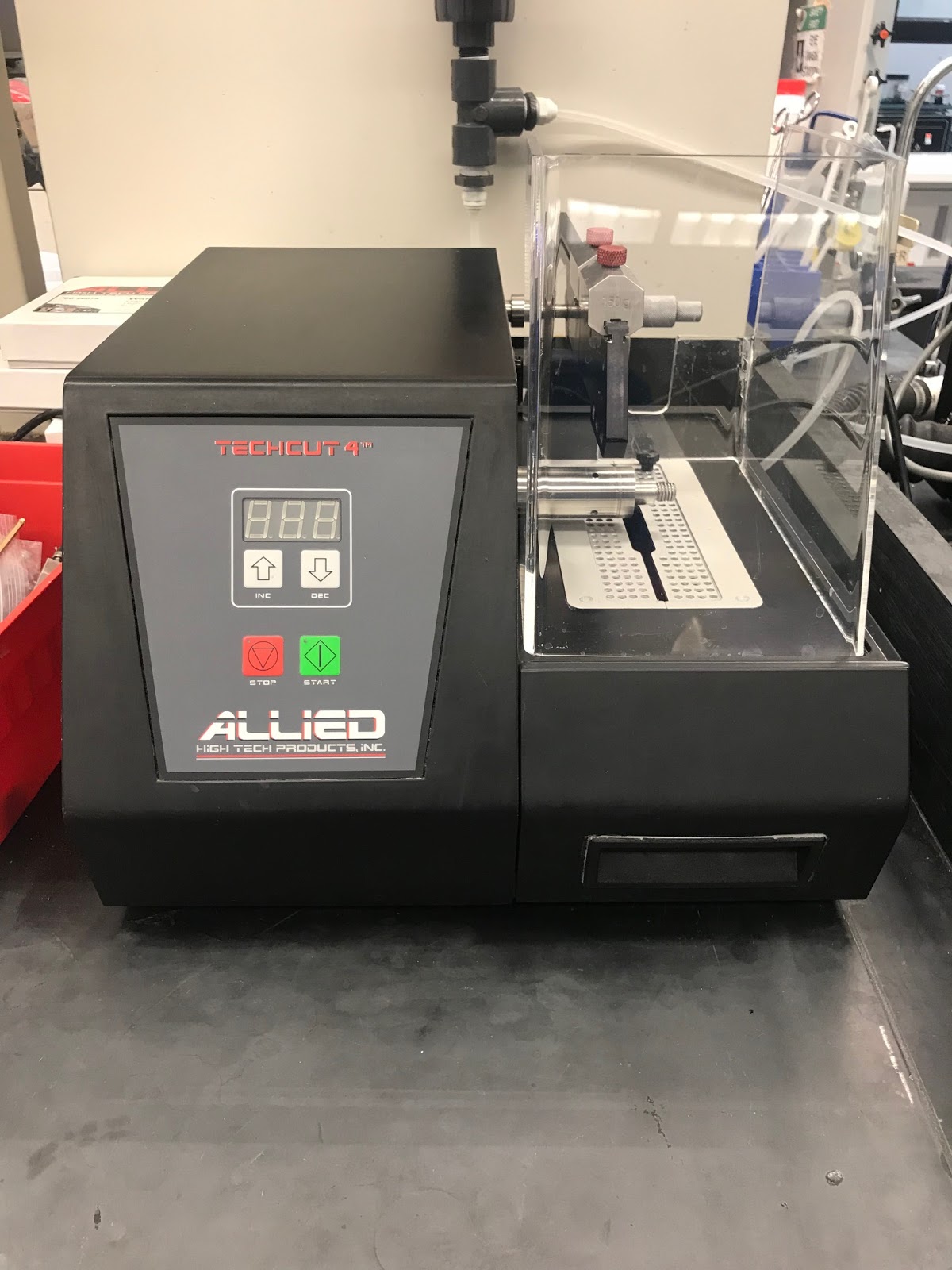 |
Zeiss microscope
Optical microscope provides imaging in bright‐field, dark‐field, and differential contrast modes at magnifications of 2.5x, 10x, 20x, and 100x. The microscope can be operated in both reflectance and transmission modes. |
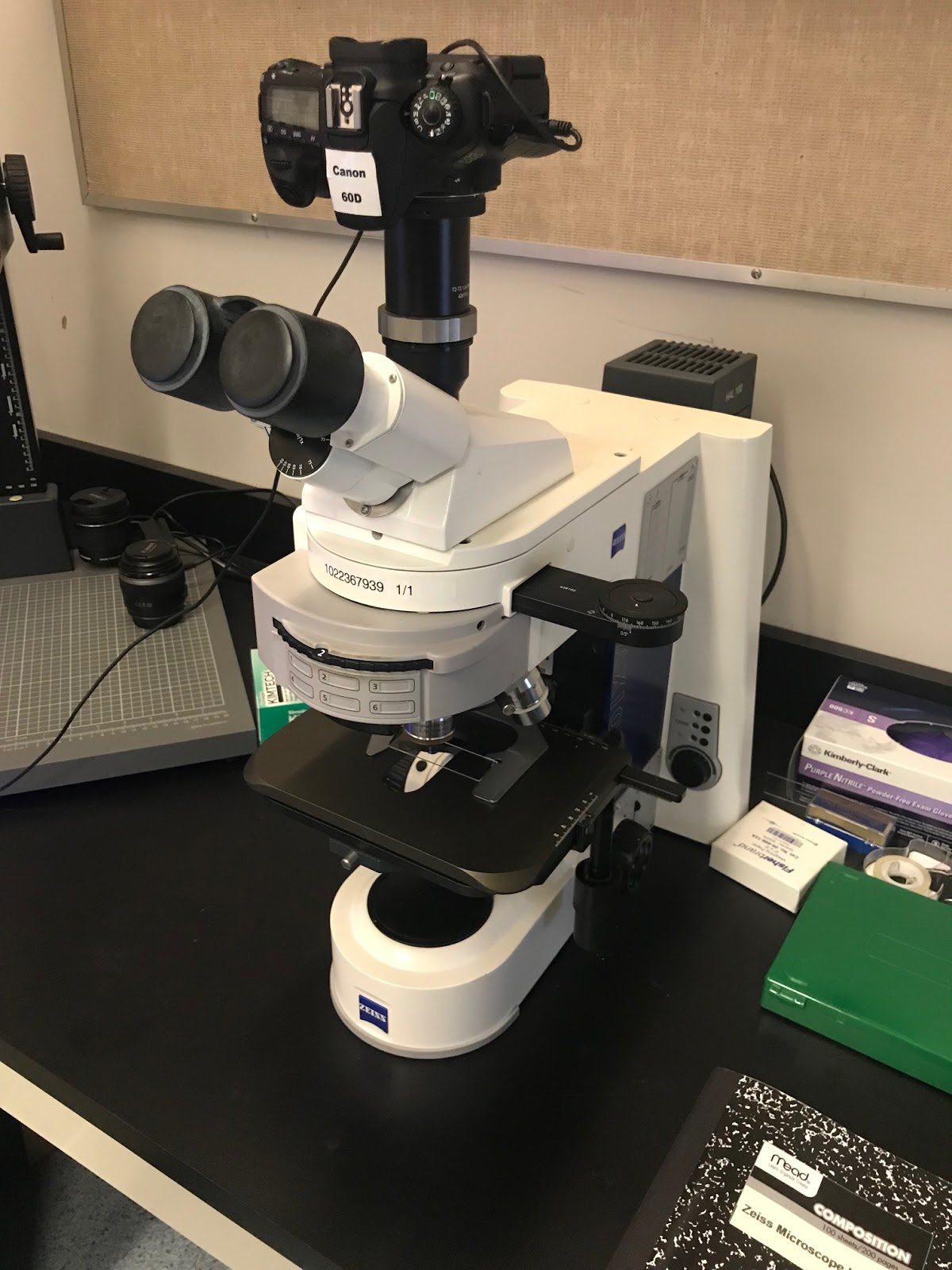 |
Stereomicroscope |
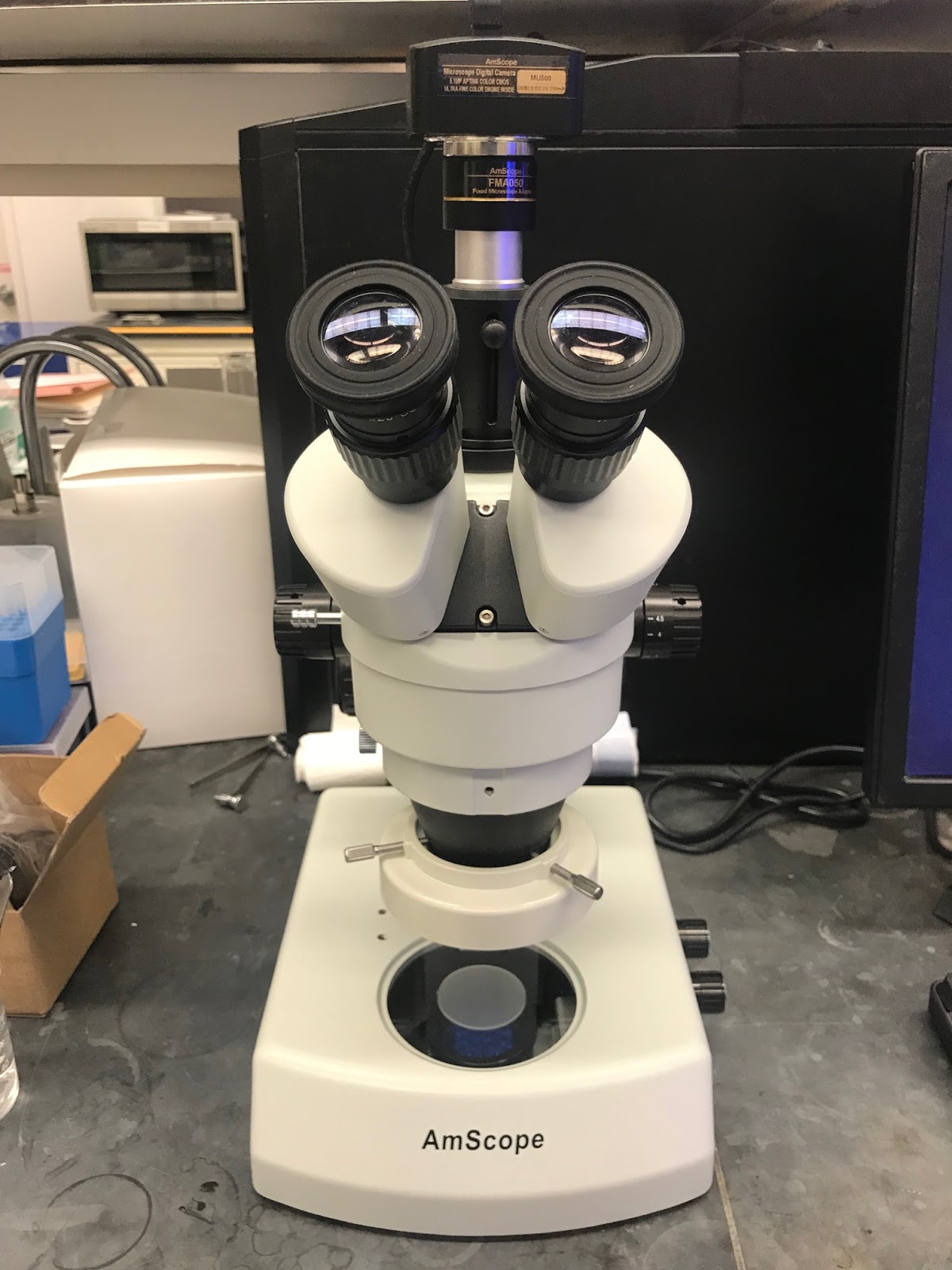 |
Ultramicrotome |
 |
Drill Press, Vertical Bandsaw |
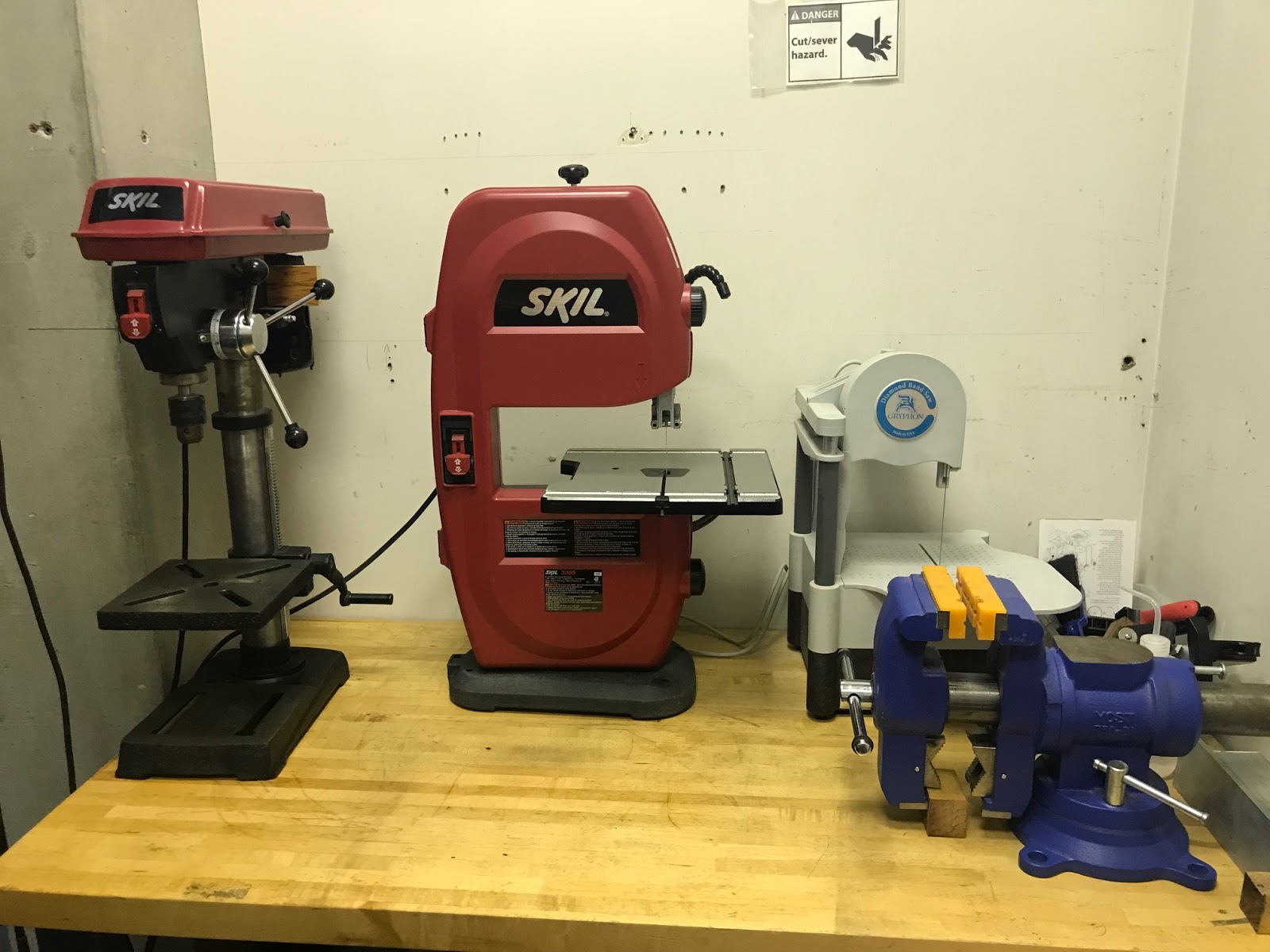 |
Tile Saw |
|

